He was 14 and headed to the mall. Tacoma residents mourn boy’s killing, call for change
Outside her front door in Tacoma’s Salishan neighborhood on a recent Monday, Daine Mabel spoke about her firstborn child, Xaviar, and how her beloved and often selfless son came to be another victim of gun violence, killed, police say, by bullets meant for another boy.
A little girl flittered behind her, eventually hauling inside the donated contents of a big red cooler that sat on the porch. Mabel had another difficult day ahead. She had an appointment to make arrangements for her 14-year-old son’s funeral, and she’d already canceled several times. Mabel, 32, said she sometimes tells herself her son wasn’t really dead. He had disowned her, she said, or he was on a vacation.
While Mabel talked, a car stopped at the curb. Two women got out and went to her, offering to help however they could. The women hugged and held on. Through tears, Mabel wondered aloud at what had gone wrong. She recalled a conversation she’d had with her son and told them she warned Xaviar about the indiscriminate way guns could kill. Mabel had asked Xaviar where he thought he’d go after he died.
“He said, ‘Imma be with Jesus,’” the mother said.
Xaviar Siess died Jan. 12 after he was shot while waiting for a bus with three other boys just north of 40th Street East and Portland Avenue. A 17-year-old arrested and charged with his murder was driving to get snacks with his girlfriend when he saw the boys, reversed in the road, cut off traffic in the left lane and opened fire, according to court records.
Witnesses reported hearing six to eight gunshots that sent two of the boys running and knocked down Xaviar. One boy, 14, stayed behind. Records state he was putting pressure on Xaviar’s wound when Tacoma Police Department officers arrived.
The alleged gunman was arrested four days after the shooting. If convicted, he could spend decades behind bars. Detectives have told Mabel they don’t believe Xaviar was the target.
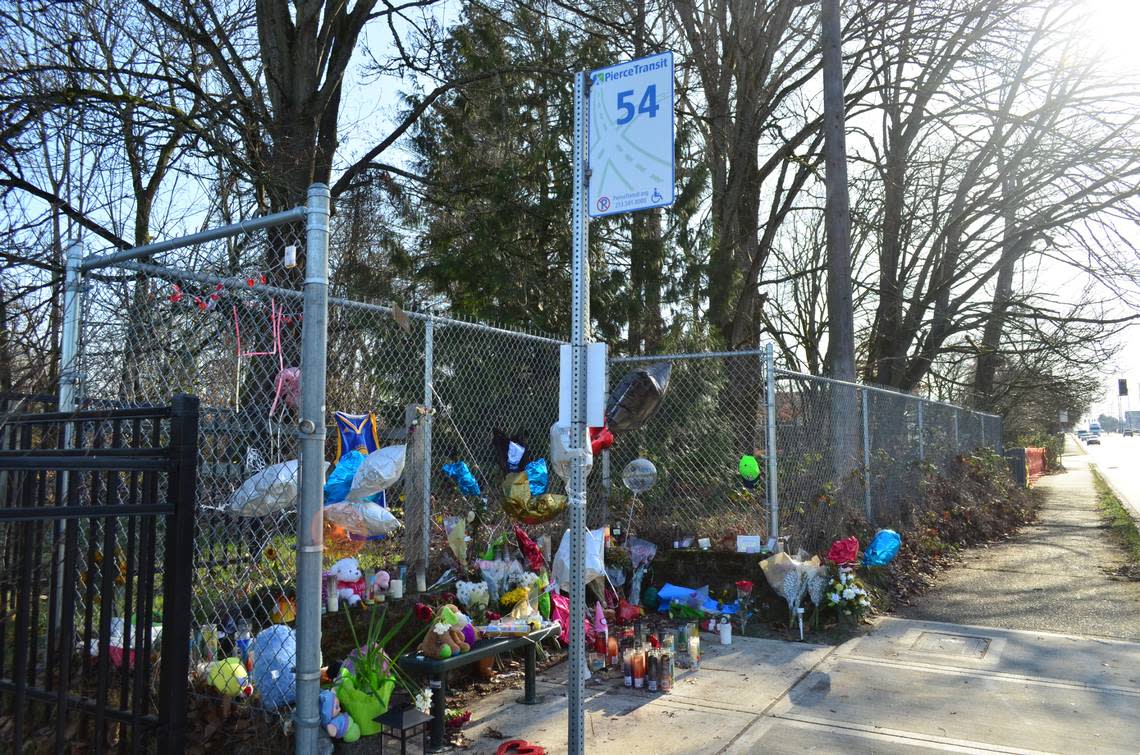
Outside Xaviar’s home, his mother lamented the youthfulness of everyone involved. Even if the bullets weren’t meant for Xaviar, she said she wouldn’t have wanted any of them to get hurt.
Gun violence is now the greatest threat to an American child’s life, new data shows. The New York Times recently reported that in 2020, firearm deaths surpassed car crashes as the leading cause of death for children in the United States. Citing data from the Centers for Disease Control and Prevention, the Times wrote that automobile incidents had been the most common way for a child to die since the 1960s. Now it’s being shot.
Firearm deaths include accidental shootings and suicides, but according to the newspaper, two-thirds of firearm deaths involving children in 2021 were homicides. Black children are particularly at risk of becoming victims. The Times found that Black boys are eight times as likely as other children to be killed with a gun, and the racial disparity has grown in recent years.
In Tacoma, shootings made up 97 percent of homicides last year. All but one of the 45 killings involved a gun. Although fatal shooting victims under age 20 accounted for just one homicide in the city and two others across other cities and towns in Pierce County last year, 2023 started with a surge in youth homicides in the Tacoma area that have left three teenagers dead. Xaviar was the first and youngest of the victims. The violence prompted statements from city leaders, with Mayor Victoria Woodards calling Xaviar’s death “a tragic day for Tacoma.”
‘He deserved to live’
Before the shooting, the bus stop memorial, the condolences, the GoFundMe, the vigil, Xaviar was a boy just starting the second half of his freshman year at Oakland High School. Neighbors, friends and teachers knew him as an intelligent young man who others gravitated toward. His stepfather, Kenneth Bradley, said Xaviar was a leader. Whatever he wanted to do, Xaviar’s friends wanted in on it, too.
“There wasn’t enough of Xaviar to go around,” Bradley said.
Xaviar enjoyed basketball and football, playing video games like NBA 2K or Madden NFL and being with his friends. Some of his favorite athletes were Steph Curry of the Golden State Warriors and Odell Beckham Jr. Bradley, 33, coached one of his stepson’s basketball games when the boy was younger, and he said Xaviar had a lot of potential. Like Curry, Xaviar’s position was point guard.
Bradley said Xaviar was wary of trying out for such a competitive sport like basketball. He wasn’t the tallest kid on a court — his stepfather described him as a little stocky — but Xaviar was still growing.
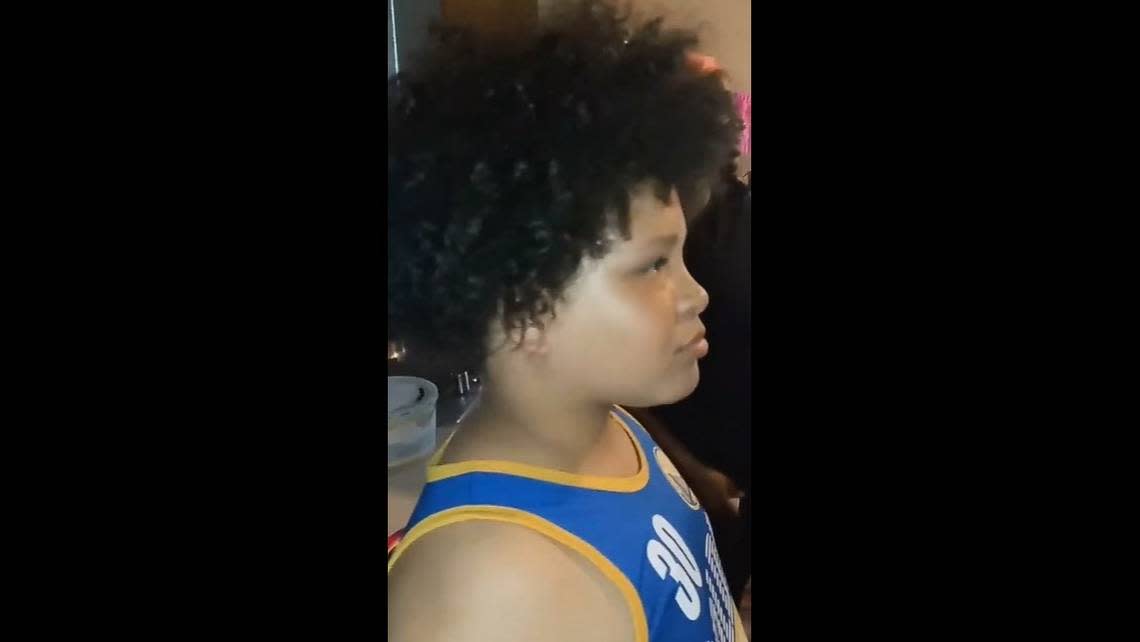
Xaviar was born Aug. 2, 2008, to Daine Mabel and Christopher Siess at Tacoma General Hospital. Mabel was pregnant with him when she graduated that year from Franklin Pierce High School. The couple wasn’t married at the time, and the two eventually split.
Mabel and Bradley met through church in 2013. He said their relationship caused some friction with Mabel’s ex, but he said Xaviar still had a relationship with his birth father and loved him. Bradley remembered asking Xaviar if it would be OK if he dated his mom over a meal at Denny’s.
“Oh, I don’t know,” Bradley recalled Xaviar telling him while the boy dipped his food in ranch dressing.
Bradley said Xaviar thought about it for a while. Halfway through their meal, the then 4-year-old boy had a decision.
“He’s like, ‘OK, I think you’re OK for my mom,’” Bradley said. “To see how loving he was, how protective he was over his mom, not just his mom, his sisters. His heart, you know, his heart man, it’s just amazing. He’s just an amazing kid.”
He was an older brother to three sisters: Meleah, 13; Azariah, 7 and Malaysia, 4. Neighbors of the boy’s family said Xaviar and Meleah were particularly close. One neighbor, Tenderly Sylvia, said she watched Xaviar grow from the age of 5. She said the siblings were inseparable when they were younger, and the two used to walk to school together holding hands.
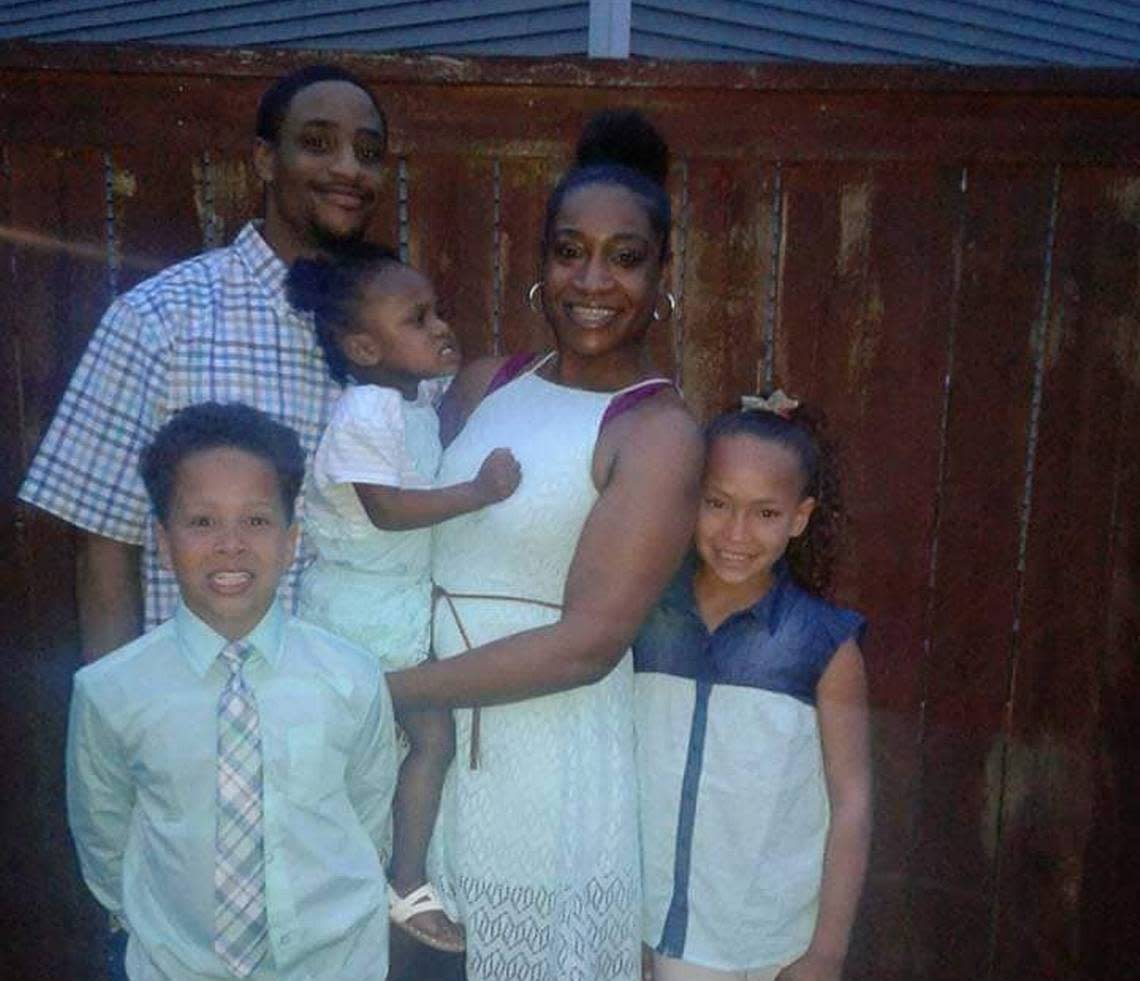
Xaviar attended Lister Elementary School, then First Creek Middle School. In fifth grade, he was awarded the Presidential Award for Academic Achievement because of his academic growth. A Tacoma Public Schools spokesperson told The News Tribune that Xaviar worked “incredibly hard” to improve, attending a math group after school two to three times a week for nearly six months.
His fifth-grade teacher, Mary Rowe, said Xaviar was part of WE Day, a youth event for community building. In a message shared by the school district, Rowe said Xaviar had the idea to partner with community groups to start activities for kids in the neighborhood such as sports because he recognized the lack of opportunity he and his classmates were afforded, and he wanted to help kids have a place to go so they wouldn’t get involved in “bad things.”
“He overcame so many challenges and had so many things that he loved in his life,” Rowe wrote. “He was loved and I am heartbroken at the way he lost his life. He deserved to live and realize all of his dreams.”
Life in Salishan
Mabel moved her family to the Salishan neighborhood around 2015. A diverse, mixed-income neighborhood managed by the Tacoma Housing Authority, Salishan’s history is rooted in struggle and resilience.
The neighborhood has gone through major changes since it was built in the 1940s as temporary housing for war workers. It gained a notorious reputation as a high-crime area in the ‘80s and ‘90s, and a massive redevelopment began in 2002. Five years later, after the first phase of the $300 million project was complete, the success of New Salishan was lauded in The New York Times. A reporter described an idyllic scene of children riding bicycles while a Cambodian man tended to his vegetable garden and Black and Russian-American teens played hacky sack.
New Salishan’s craftsman-style homes and tree-lined streets look no less idyllic in 2023, but drive-by shootings, murders and other violent crimes it has endured in recent years have left some residents feeling helpless and looking for a way out.
Mabel said she was trying to leave the neighborhood when Xaviar was killed. She was living there with housing assistance and had applied for a transfer after a man pointed a gun at her while she was driving in the neighborhood with her girls and her fiance. Mabel said the man had recently been shot, and he thought her car held gunmen coming to finish him off.
By the time she received a call about her transfer application being approved, Mabel said she told the person on the phone it was too late, her son was already dead.
Tenderly Sylvia, a single mother to a 13-year-old boy, moved from Tacoma’s Hilltop to Salishan in 2013. She lived across the street from Xaviar, and she said her son used to play outside with him, Xaviar’s sister and a bunch of other kids in the neighborhood.
“They’d be outside all day riding their bikes, playing with chalk, playing with basketballs, you know, doing things that kids do,” Sylvia said.
Sylvia said the Eastside Community Center — which hosted Xaviar’s vigil and was born out of another innocent teen’s death — was particularly popular with kids for its swimming pool and basketball courts.
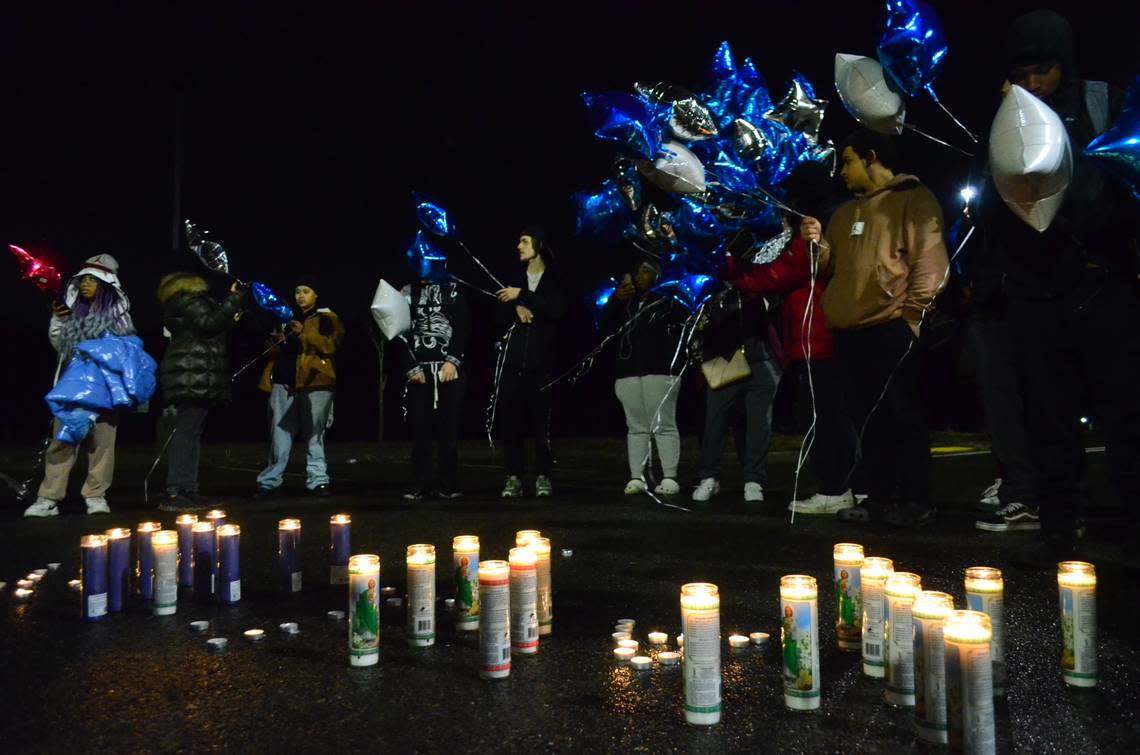
One of the reasons Sylvia has stayed in Salishan so long was because for years, she said, it was a place where kids were safe roaming the neighborhood. She said she grew up doing the same, and she felt having that gives children peace and time to be a kid. But over time, Sylvia said the peace gave way to more drug activity, vandalism and shootings. She said she thought crime began to get worse around 2018, but it was in 2020 when she really started getting nervous.
Crime statistics from Tacoma Police Department show that between 2021 and 2022, the city’s Salishan, Eastside and South End neighborhoods saw an increase in crimes against people and property. Crimes against people were up 7.2 percent and property crimes were up 20 percent. Homicides saw a particularly stark increase, with 20 killings recorded in 2022 compared to 13 in 2021. The statistics show the surge in homicides was outpaced only by a 57.1 percent increase of car thefts.
In one shooting, Sylvia said, a bullet tore through her wall and lodged itself in her box spring. A neighbor who has since left Salishan described having her kids pull their mattresses into their hallway during the pandemic to be safer when they slept. Now Sylvia rarely lets her son outside. She said sometimes she’ll hear a loud noise at home, and when she goes to check on her son, he’ll be lying on his bedroom floor, ducking for cover.
“What kind of way is that to live?” Sylvia said. “We need a change, and I feel like the people in power need to be held accountable, and they need to be more responsible for our community.”
‘Xaviar represents all of our sons’
On the day of the shooting, Xaviar was waiting for a bus to take him and his friends to the Tacoma Mall, his mother said. He had just started hanging out with them in the last few months. The boys were older than him, and Mabel said they had been trying to make Xaviar “tough.”
She didn’t know why her son would need to be tougher than he was, but she didn’t know these boys well, and she said they weren’t from their neighborhood. Mabel said she didn’t think they told Xaviar a gunman was targeting them, and she said Xaviar wouldn’t have stayed with them if he’d known.
Tacoma police detectives suspect the shooting was gang-related, according to a TPD spokesperson. Police said they don’t believe Xaviar was involved in gangs, but some of the people he was with at the bus stop were.
Xaviar was someone who looked out for his friends, Mabel said. She described him trying to get food for others in the neighborhood and sometimes even sleeping outside with friends when their parents put them out.
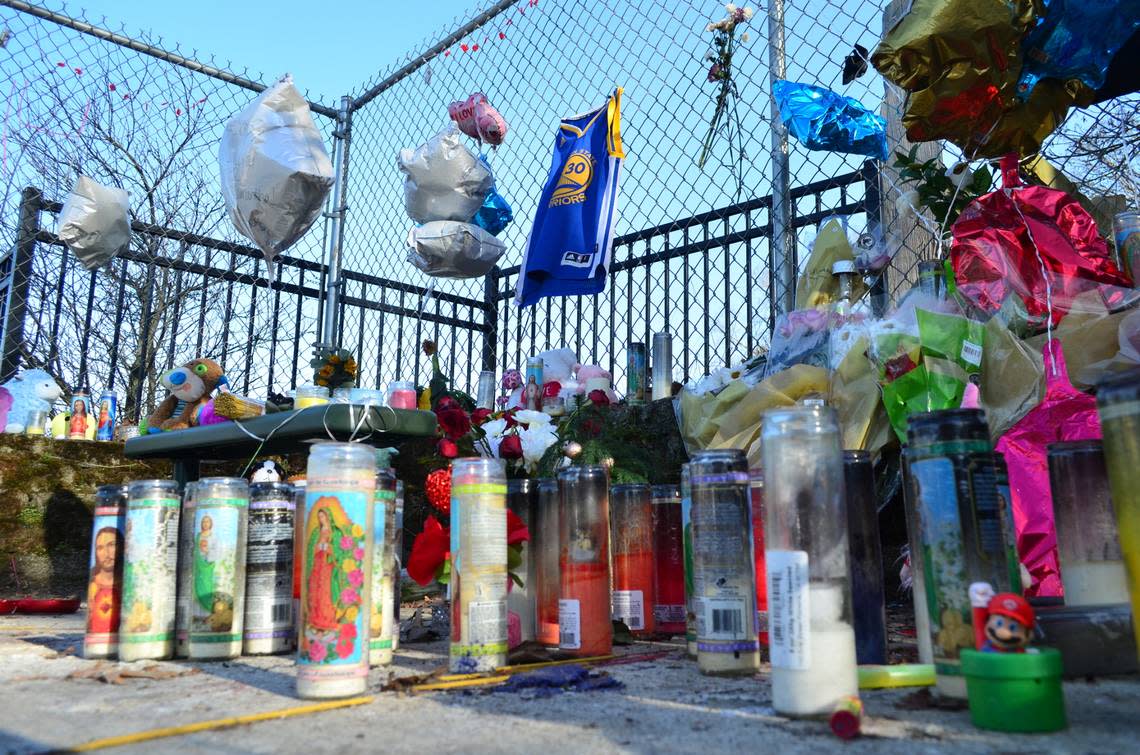
The power of young people and the importance of holding friends accountable was the focus of one man’s speech at a vigil for Xaviar organized the weekend after the shooting. The man was Thrett Brown, executive director of the non-profit Young Businessmen of Washington. Speaking to about 50 parents, teenagers and children who had gathered at the Eastside Community Center, Brown warned the young people in the audience that they would continue to lose people in their lives.
Brown spent time in prison for drug charges in the early 2000s, and he told the crowd he’s lost scores of friends to violence and incarceration. He said it took losing his best friend to murder to give him the wake-up call he needed to turn his life around. Brown commended the teenagers there for showing up, but he said while they’re at the vigil, others experiencing loss are turning elsewhere, to “the streets” and destructive behavior.
“Who’s the person that’s saying, ‘No we’re not going to do that,’” Brown said.
While Brown spoke, the woman who organized the event, Elizabeth Clark, stood to the side of the rows of black folding chairs set up in the gymnasium. Clark lived in the Salishan neighborhood for almost eight years before she moved in 2020. Her children knew Xaviar well.
Speaking at the vigil, Clark told the crowd the strength in their community lies in all of them coming together.
“Nobody is coming to save us, and this is going to continue to go on unless we step up and do things,” Clark said. “So we need to take our community back. We need to stand up for ourselves. We need to organize and come together.”
In the days after the vigil, Clark said the reality is that people in the Salishan community are dying, and she doesn’t know what to do. Clark said coming together for events like a vigil helps, but she said working together has to continue, and resources to do so are slim.
“People are tired,” Clark said. “They’re like, OK, here’s another vigil, another gathering, another march, another this and nothing changes.”
Still, Clark said she has hope that Xaviar’s life and death can bring change to her former neighborhood. Like others who lived there, Clark described random shootings, men hiding from police while kids played nearby and having to yell at neighbors’ children to run inside when she heard gunshots. She said she didn’t know other kids in the neighborhood as well as she knew Xaviar and other children on her block, but any of them could have been victims of gun violence.
“Xaviar represents all of our sons,” Clark said. “That could have been any one of them, no matter what the age was.”
When Clark thinks of Xaviar’s legacy, she said she thinks of the friends he leaves behind and his community. She said she sees God using Xaviar to make change.
“We can change it,” Clark said. “We can make it safe now to where no other kid has to lose their life like that.”
